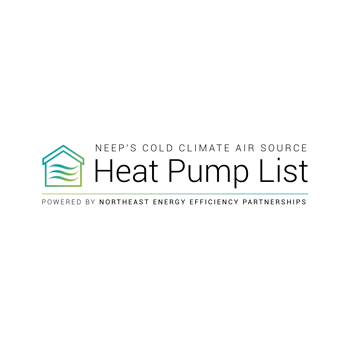
By Dave Hewitt | Wed, July 3, 19
In this issue of Building Decarb Central, we look at some of the critical discussions and findings from NEEP’s recent 2019 Air Source Heat Pump Market Transformation Workshop in Woburn, Massachusetts. The two-day event drew about 150 people from all over the U.S. and Canada who focused on building the market to provide low-carbon space heating for buildings. Participants included manufacturers, program administrators, government officials, and representatives from market transformation organizations.
A few key discussions stood out for me – some of them new information or products needed, some of them market transformation basics that are, from time to time, overlooked when working with new opportunities and products. Let’s take a look:
Old School
Product manufacturers need consistency so that they know exactly what to make a year or two or more into the future. Changing manufacturing lines (and supply lines) is expensive. Appliance manufacturers brought this issue to program administrators and policymakers years ago – thus the existence of national appliance standards and Energy Star specifications and branding. Consistency has a geographical component (e.g. market size to make the investment worthwhile), a time component (also related to market size, but over time), and can also have other elements depending on product – such as quality installation (needed for heat pumps).
 NEEP has a cold climate specification for air source heat pumps that manufacturers have supported and adopted. Some programs are promoting the idea of “NEEP Plus”, which splits the market a bit and creates uncertainty, which results in higher costs. For a “NEEP Plus” specification to be most beneficial, it must be worked into the existing NEEP cold climate specification over time, and with manufacturer support.
NEEP has a cold climate specification for air source heat pumps that manufacturers have supported and adopted. Some programs are promoting the idea of “NEEP Plus”, which splits the market a bit and creates uncertainty, which results in higher costs. For a “NEEP Plus” specification to be most beneficial, it must be worked into the existing NEEP cold climate specification over time, and with manufacturer support.
Some colder climate programs have no specifications in place, which enables lower cost but also allow lower performance equipment to remain in that market. That equipment is better suited to a climate where freezing temperatures are a rare event. Such equipment will not displace as much fossil fuel, will cost much more to run in cold conditions, and will lead to higher winter electricity peaks as more low-performance units are added over time. From the manufacturers’ carbon reduction and market transformation perspectives – a uniform specification for cold climate ASHPs should be adopted over the entire northern U.S. and much of Canada.
New School
For heat pump manufacturers, there is a huge question: What is the refrigerant of the future? When, how, and by whom will this decision be made? Refrigerants that are accidently released to the atmosphere, which will occur, have a global warming component. Manufacturers can make the change in refrigerants to reduce this impact, but the process is multifaceted and expensive. Given that these manufacturers are multinational companies, greater consistency across major markets could also result in lower consumer costs. More clarity, certainty, and consistency will be necessary to enable this refrigerant change to occur without market disruption and at a lower cost to manufacturers and consumers.
Some Old/Some New
Should efficiency be required before heat pump incentives are provided to consumers? Energy efficiency has been promoted by many programs now piloting heat pumps, especially electric utilities. It seems like the answer should be “Yes, efficiency first”, but that does create more hurdles for consumers, like cost and complexity.
For whole house retrofits, there are significant reasons to ensure efficiency first (beyond the basics of comfort and general energy/cost operational savings). First, you can down-size the heat pump or even put in a smaller distribution system, which reduces system installation costs by, potentially, thousands of dollars. Second, while oversizing heat systems used to be the norm (old school), properly sizing a heat pump system to the load is important to keep the system operating in its most efficient range (new school). Both over- and under-sizing reduce the efficiency of heat pump operations. If you install the whole house heat pump and decide later to weatherize, your system is now oversized (increasing first costs) and underperforming (increasing operational and possibly maintenance costs). This makes no sense.
Most current installations in the Northeast (about 75 percent), however, are single ductless units that supplement rather than replace current fossil fueled units. There are benefits to familiarizing customers with this new generation of heat pumps even if the solution is not complete. Adding efficiency has a bundle of low-cost benefits and the ultimate goal would be an appropriately-efficient house heated entirely with renewable energy, but there could be multiple pathways to get to that end point. For example, NYSERDA is developing a “Heat Pump Ready” program that could point the way to better solutions.
But here comes new school again. If you have two heating systems with different fuel types and distribution systems in a house, how do you control them to get maximum benefits? Field research to date shows that overall system performance could be improved with better controls. A new basic need going forward is better controls when two systems are in place to optimize carbon reduction and reduce consumer costs. Agreement and clarity on exactly what is needed in the controls will help manufacturers design the right product and better understand the market size to justify the investment (old school).
Supporting this newest generation of heat pumps is similar, in many ways, to earlier market transformation efforts that successfully changed lighting and appliance markets throughout the United States. Heat pump products are already robust and the manufacturers are large international firms, which really helps advance the market. However, major challenges remain. The costs of the products are substantial, the benefits are less easily quantified in “dollars saved”, and heat pumps involve design and installation variables that also need resolution. We have a great starting point, but getting all the pieces of the market properly aligned will take very significant collaborative support and education going forward.
This blog is part of Building Decarb Central, a series of blogs and other resources aimed at providing a constant flow of information on building decarbonization. Be sure to check out our web portal for more stories, resources, and information.
